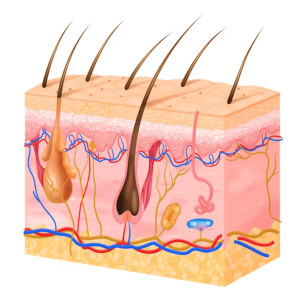The HST method – New hair transplant technique

Hair loss is a problem that affects millions of men and women around the world. This condition can have a significant impact on self-esteem and self-confidence. Fortunately, technological advances in the field of hair transplantation today offer effective solutions to restore hair density. Among these advances, the HST (Hair Stem Cell Transplantation) method stands out as a promising cutting-edge technique for hair transplantation. In this article, we will explore in detail the HST method, its benefits and its revolutionary potential in the field of hair restoration.
Understanding the HST method
The HST method is a relatively recent innovation in the field of hair transplantation. It is based on the science of hair stem cells to restore hair density in a natural and lasting manner in patients suffering from baldness. Unlike traditional hair transplant methods, the HST method does not just move hair follicles from a donor area to a recipient area, but aims to regenerate the hair follicles themselves.
The HST method process begins with collecting hair stem cells from the patient’s donor area. These stem cells are then isolated and cultured in the laboratory to multiply them. Once enough hair stem cells have been produced, they are re-implanted into the recipient area of the scalp, where they begin to grow into new hair follicles.
This process offers several advantages over traditional hair transplant methods. Firstly, it allows for more natural hair regeneration, as new hair follicles are created from the patient’s own cells. Additionally, the HST method achieves greater hair density, as it does not depend on the limited amount of hair follicles available in the donor area. Finally, the results of the HST method are long-lasting, as new hair follicles continue to grow and renew themselves naturally.

The advantages of the HST method
The HST method has many benefits that make it an attractive option for people looking for hair loss solutions. Here are some of these benefits:
1. Natural regeneration
One of the main advantages of the HST method is its ability to recreate hair in a natural way . The new hair follicles that form from the patient’s hair stem cells look and grow in the same way as natural hair. This means that the results of the HST method are indistinguishable from real hair.
2. Improved hair density
Unlike traditional hair transplant methods, which are limited by the amount of hair follicles available in the donor area, the HST method achieves higher hair density . Hair stem cells grown in the laboratory can be re-implanted in greater numbers, resulting in fuller, thicker hair.
3. Sustainability of results
The results of the HST method are long-lasting , as new hair follicles continue to grow and renew themselves naturally. Once the hair stem cells are re-implanted, they become part of the patient’s hair growth cycle and produce hair throughout their life.
4. Minimization of scars
Unlike some hair transplant techniques that leave visible scars in the donor area, the HST method minimizes scar formation . Hair stem cell collections are carried out very precisely, which reduces the risk of unsightly scars.
The HST Method Process
The HST method process involves several stages, each of which is crucial to ensure the success of the hair transplant. Here is an overview of the main steps of the process:
1. Consultation and evaluation
Before proceeding with the HST method, the patient undergoes a thorough consultation with a hair transplant specialist. During this consultation, the doctor assesses the current condition of the patient’s hair, determines the donor area and discusses the patient’s expectations. It is also during this stage that the treatment plan is developed.
2. Collection of hair stem cells
Once the treatment plan is established, the process of collecting hair stem cells begins. This step usually involves light local anesthesia of the donor area, followed by the careful collection of hair stem cells.
3. Laboratory culture
The collected hair stem cells are then cultured in the laboratory to multiply them. This step may take a few weeks, during which the hair stem cells multiply in sufficient numbers for transplantation.
4. Reimplantation of stem cells
Once the hair stem cells are ready, they are re-implanted into the recipient area of the patient’s scalp. This step is carried out with precision to ensure uniform distribution of hair stem cells.
5. Follow-up and post-operative care
After the transplant, the patient is closely monitored by the medical team. Proper post-operative care is provided to ensure that the hair stem cells develop optimally. The patient also receives instructions for caring for their new hair.
The results of the HST method
The results of the HST method are not immediately visible, as it takes time for hair stem cells to grow into new hair follicles. Typically, the first signs of hair regrowth appear after a few months , and results continue to improve over time. Patients can expect fuller, natural-looking hair, and the results are long-lasting.
Conclusion
The HST method represents a significant advance in the field of hair transplantation . Using hair stem cell science, this technique offers an effective, natural and long-lasting solution for hair loss. With its benefits such as natural regeneration, improved hair density, long-lasting results and minimization of scarring, the HST method is increasingly popular among those looking for a solution to their baldness problem. If you are considering a hair transplant, it is essential to discuss your options with a qualified hair health professional to determine if the HST method is right for your needs. Thanks to this innovative technique, many people regain their self-confidence and self-esteem by regaining thick, natural hair .

Dr. Baykal Oymak is a highly esteemed transplant specialist hailing from Turkey, boasting an impressive 17-year tenure in the medical field. His professional journey commenced as a dermatologist at Bogazici Hospital in Istanbul, where he began to hone his expertise. Since then, Dr. Oymak has conducted a remarkable tally of approximately 14,000 triumphant hair transplant procedures within Turkey. Additionally, he holds specialization in PRP treatment and Mesotherapy, further solidifying his reputation as a versatile and accomplished practitioner in the realm of dermatology and transplantation. » SCHEDULE YOUR HAIR TRANSPLANT IN TURKEY HERE «
